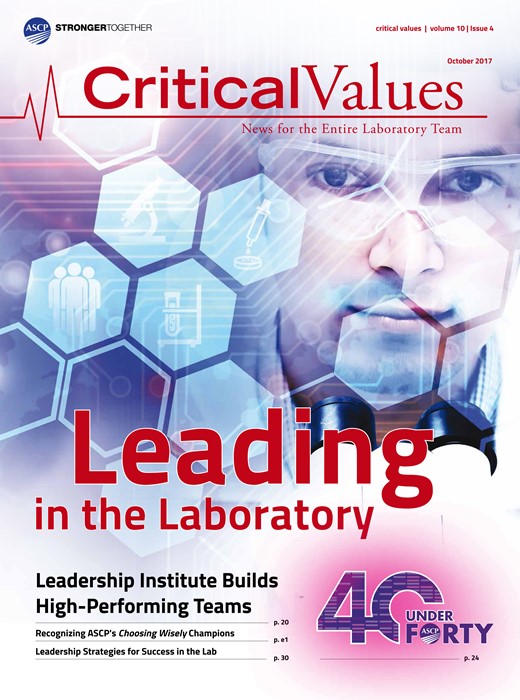-
PDF
- Split View
-
Views
-
Cite
Cite
Around ASCP Journals, Critical Values, Volume 10, Issue 4, October 2017, Page 9, https://doi.org/10.1093/crival/vax025
Close - Share Icon Share
The American Society for Clinical Pathology (ASCP) offers information and education that can aid your practice as pathologists or laboratory professionals. Whether you read the printed journals or get your information online, the American Journal of Clinical Pathology (AJCP) and Lab Medicine provide the latest research, reports, and studies. Here are some highlights from recent issues.
AJCP
An article in the July issue of AJCP by Dr. Daniel Cloetingh and colleagues, “Comparison of Three Methods for Measuring Workload in Surgical Pathology and Cytopathology,” finds that the Royal College of Physicians point system is the most advanced system for measuring workload. In an August article by Dr. Joseph W. Rudolf et al, “Analysis of Daily Laboratory Orders at a Large Urban Academic Center: A Multifaceted Approach to Changing Test Ordering Patterns,” the authors describe how their collaborative approach to change test ordering patterns in a large academic medical center resulted in a long-term shift in ordering practice. The September issue has a review article by Dr. Caleb W. Cheng and coauthors, “Therapeutic Plasma Exchange and Its Impact on Drug Levels: An ACLPS Critical Review.” These articles and others can be accessed at https://academic.oup.com/ajcp as part of your ASCP membership.
Lab Medicine
The August issue of Lab Medicine features a Laboratory QA article by Tanasijevic et al that looks at the increase in patient satisfaction and reduction of pre-analytical errors after implementing an electronic specimen collection module in phlebotomy. This article and more can be found in print and online at www.labmedicine.com.
Several online-only papers for Lab Medicine cover topics relevant to laboratory professionals and pathologists. In “Laboratory Integration and Consolidation in a Regional Health System,” author Jim Cook describes efforts to integrate several laboratories into on cohesive system across a wide network of facilities. Robert F. Downey writes about establishing reference ranges for a rural community in “Complete Blood Count Reference Ranges from a Rural Haitian Ambulatory Care Clinic.” These papers and more can be found on www.labmedicine.com.



